Come and find out at the NYC WINE RIOT this weekend!
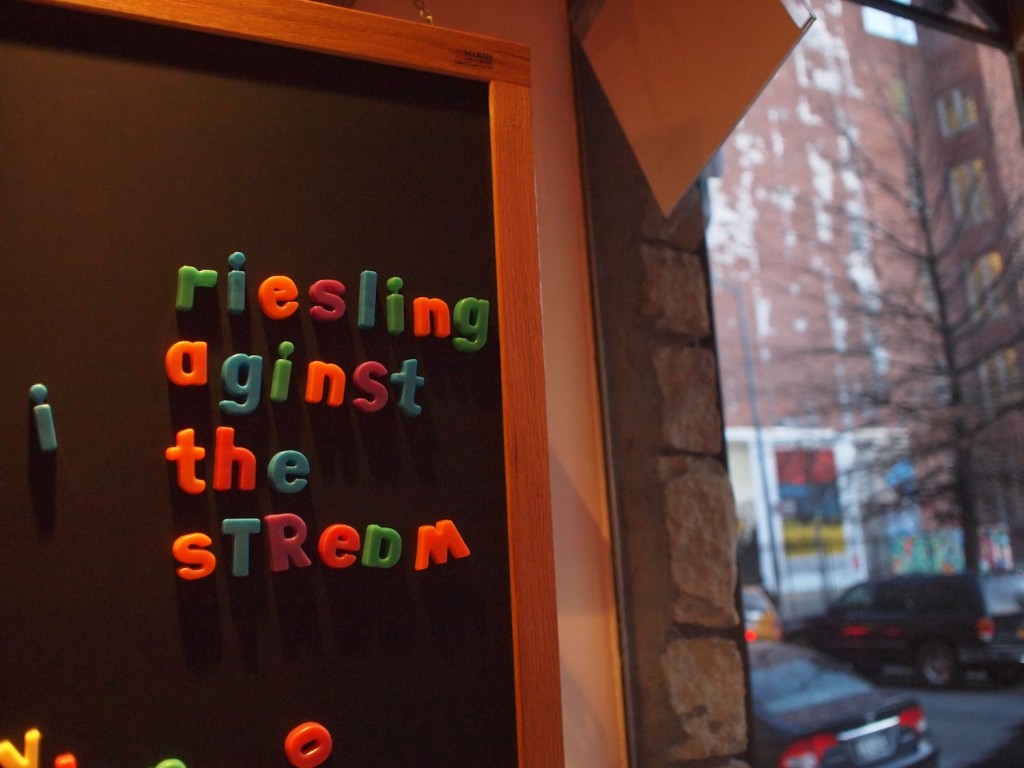 Having come out about being a WINE RIOT I’ve been asked what someone who’s like that actually does. In my case all of this is colored by Riesling, which my new book (published by Stewart, Tabori & Chang) declares to be the BEST WHITE WINE ON EARTH. In America nobody has questioned that title, instead either they cheer me on, launch, smile or give me an ironic wink. However, back in my country of birth England this title is treated with scorn and derision. It has even been suggested to me by someone in the British wine industry that, “you can’t do that!” Of course, the fact is that I just did and I’m not retracting it. However, let’s get back to that question.
Having come out about being a WINE RIOT I’ve been asked what someone who’s like that actually does. In my case all of this is colored by Riesling, which my new book (published by Stewart, Tabori & Chang) declares to be the BEST WHITE WINE ON EARTH. In America nobody has questioned that title, instead either they cheer me on, launch, smile or give me an ironic wink. However, back in my country of birth England this title is treated with scorn and derision. It has even been suggested to me by someone in the British wine industry that, “you can’t do that!” Of course, the fact is that I just did and I’m not retracting it. However, let’s get back to that question.
Of course, one of the things that you do if you a Riesling Against the Stream Wine Riot is go to the NYC WINE RIOT this Friday evening, and Saturday afternoon and evening and hold a series of a dozen 20 minute Riesling Crash Courses. Against the advice of friends and colleagues I will begin each Crash Course with a 60 second Riesling Slam into which I will try to pack all the Riesling essentials into that single minute. This will require some practice, for which there is too little time, and probably puts me under too much pressure, so I won’t be telling my therapist about this until I’ve done it and its too late.
To book tickets for the New York WINE RIOT go to:
https://secondglass.com/event-categories/event/NYC-2014-fall/features/
The other thing which a Riesling Against the Stream Wine Riot does is to plant a vineyard just outside Berlin/Germany on the SW side at roughly 52° 30′ North. Back in 2012 the Klosterhof Töplitz wine estate with just under 5 acres of vines on a hillside site just outside Töplitz/Brandenburg came under the direction of the multi-talented Ludolf Artymowytsch. Together with Ludolf I developed plans to plant a total of just shy of one thousand vines in two corners of the vineyard where the existing planting was struggling for inexplicable reasons. Finally on May, 3rd 2013 a group of friends and I got those vines in the soil and from the above picture you can see how they’ve flourished. Something like 600 of them should bear a small crop next year, which would give us enough wine to fill one (used) barrique, and enable us to begin production of the Wine with the Secret Name.
Now, I know what you’re all thinking: Stuart has planted Riesling. However, I didn’t do that, because I’ve yet to see any evidence that Riesling can be persuaded to ripen with any regularity around 52° 30′ North, and a human Wine Riot couldn’t do something as dumb as planting his favorite grape somewhere that it wouldn’t stand a chance of succeeding. That would be Riesling Fetishism rather than Riesling Love. So I studied the existing local plantings, experimental and commercial and drew up a short list of candidate grape varieties, then whittled that down to just one variety which seems almost ideally adapted to the growing conditions in the Very Cool Climate northeast of Germany.
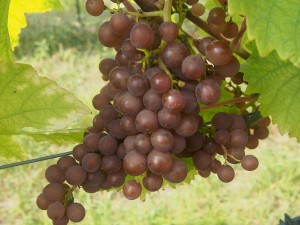 As you can see from this photograph taken on September 7th this year, that is roughly three weeks prior to the harvest, Grauburgunder (aka Pinot Gris) ripens very well in the climate of the Berlin-Brandenburg area. For those interested in the numbers they had 10% potential alcohol, so ought to come in at 12% – 13%. The 2012 and 2013 dry Grauburgunders from Klosterhof Töplitz are good wines with delicate apple blossom and melon aromas and enough ripe flavors to balance the relatively high acidity for this grape. These were both average vintages and 2014 looks much more promising, also because during the last two years Ludolf and vineyard manager Andreas Schultze have enormously improved the vitality of this organic
As you can see from this photograph taken on September 7th this year, that is roughly three weeks prior to the harvest, Grauburgunder (aka Pinot Gris) ripens very well in the climate of the Berlin-Brandenburg area. For those interested in the numbers they had 10% potential alcohol, so ought to come in at 12% – 13%. The 2012 and 2013 dry Grauburgunders from Klosterhof Töplitz are good wines with delicate apple blossom and melon aromas and enough ripe flavors to balance the relatively high acidity for this grape. These were both average vintages and 2014 looks much more promising, also because during the last two years Ludolf and vineyard manager Andreas Schultze have enormously improved the vitality of this organic 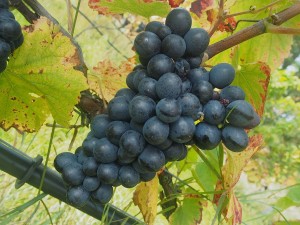 property. If you think the idea of growing red wine in such a cool location (the summers are actually rather warm, but spring often comes late to this part of Germany) then take a look at these St. Laurent grapes also photographed on September 7th. Here too they had at least weeks of further ripening ahead of them, but were already close to 11% potential alcohol. I’d say that this makes 13% – 13.5% a realistic possibility.
property. If you think the idea of growing red wine in such a cool location (the summers are actually rather warm, but spring often comes late to this part of Germany) then take a look at these St. Laurent grapes also photographed on September 7th. Here too they had at least weeks of further ripening ahead of them, but were already close to 11% potential alcohol. I’d say that this makes 13% – 13.5% a realistic possibility.
As with the Grauburgunder that means full technical ripeness (sometimes called physiological ripeness, a misleadingly simplistic term), although I don’t think it means that wines like the high end Pinot Gris from Alsace/France or the top St. Laurent from Burgenland/Austria are possible in the Berlin-Brandenburg area. The wines from 52° 30′ N are always going to be lighter in body and structure (I’m talking particularly about tannins) than those of the same grape varieties from warmer climates in more southerly locations where the intensity of solar radiation is higher. Climate change hasn’t abolished those differences any more than it has removed vintage variation.
So which grape variety did I choose? Well, the soils of Brandenburg are primarily sandy and Töplitz is no exception to that rule, in fact the south-facing hillside on which “my” vines are planted is literally a sand dune. This means that drought stress is almost certain in summer at some point. The young vines were lucky in both 2013 and 2014 that these periods were short, but in the future there will also be vintages with longer periods of drought stress. At the Geisenheim wine school which I attended as a guest student in 2008-9 I learnt that while drought stress can be positive for red wines (since it forces the vines to producer more tannins, thereby giving the wine more structure) it can be very negative for white wine grapes. I then searched for an early-ripening red wine grape that grows and ripens well in the Berlin-Brandenburg area.
Dr. Manfred Lindicke of the Wachtelberg site and winery in Werder/Brandenburg proved to me that VB 91-26-19, or Pinotin, pictured above, is such a variety. I had already come across it during my time at the Geisenheim wine school where I learnt that it is a so-called “PiWi”, which means pilzwiederstandsfähige Rebsorte, or fungal resistant grape variety (it is very resistant to powdery mildew and botrytis, and also has good resistance to downy mildew). As the experienced amongst you will immediately note from the photograph, although the name says that this is a cross between Pinot Noir and another grape it doesn’t look much like Pinot Noir. The wine doesn’t taste much like Pinot Noir, largely because of the berries thick skins, nor do I want it to do so either. The whole point is to make a red wine with very distinctive aromas and flavors, almost none of that coming from the oak barrel(s) it matures in; a wine that will excite a Riesling against the Stream Wine Riot like me!
Now I have to go and practice that 60 second Riesling Slam for tomorrow night and Saturday! See you at the NYC WINE RIOT!

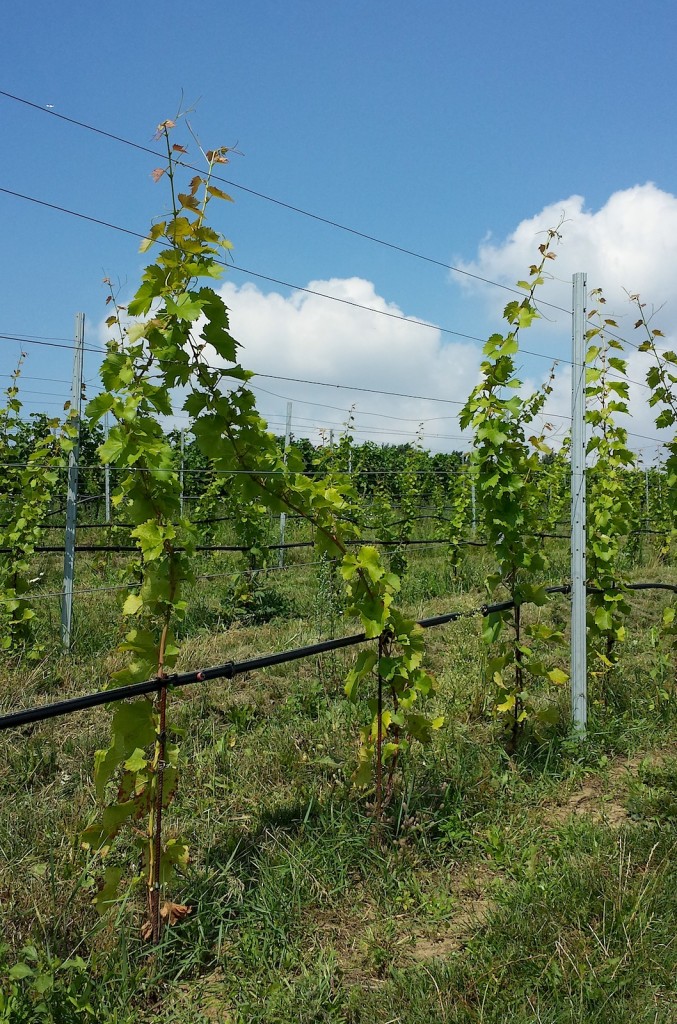
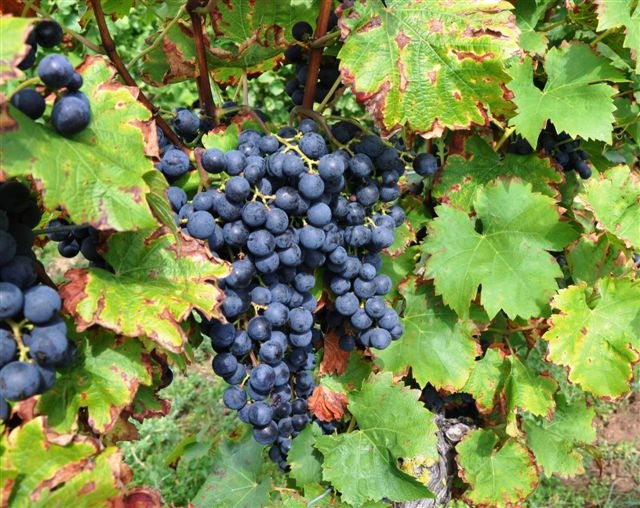
![120114_riesling_global_RZ [1600x1200]](http://www.stuartpigott.de/wp-content/uploads/2014/09/120114_riesling_global_RZ-1600x12004.jpg)